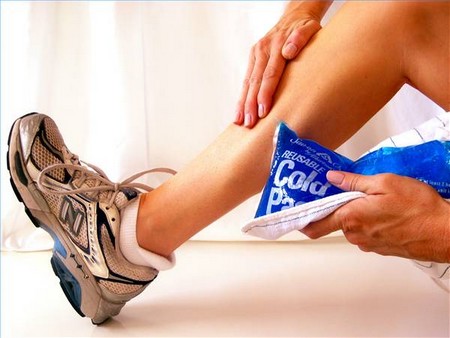Shin splints produce pain that radiates along the inner surface of the large bone of the lower leg. This condition is caused by running or walking on hard surfaces in improper shoes. It is most prevalent in unconditioned and novice exercisers who do too much too soon. Jogging or walking in one direction on a banked track or banked road shoulder can contribute to shin splints. Shin splints are the most common running injury. Overweight and obesity can contribute to shin splints.
Pain associated with this injury manifests itself gradually. Initially it occurs after the workout, but as training continues, it tends to show up during the workout. In severe cases, pain accompanies walking and stair-climbing. Treatment includes rest, application of ice, wrapping or taping the shin, and placing heel lifts in the shoes.
The following exercises might help.
Toe Flexor
1. Sit in a chair with the bare feet approximately shoulder-width apart.
2. Place a towel on the floor in front of both feet, allowing the toes to overlap the near edge of the towel.
3. Repeatedly curl the toes to pull the towel toward you so it ends up under the arch of the feet.
The heels must be in contact with the floor at all times. You may place a weight, such as a book or a can of food, on the towel to increase the resistance.
Toe Extensor
This is the reverse of the toe flexor exercise. By reversing the action of the toes, you will push the towel away from you and return it to the original position. Keep your heels on the floor.
Sandsweeper
1. Sit on a chair with one bare foot on the lateral edge of a towel.
2. Grasp the towel with the toes, and pivot on the heel to the right to sweep the towel in that direction.
3. Return the foot to the starting position, and repeat until the towel has been moved completely to the right.
4. Replace the towel in the original position and sweep to the left.
5. Repeat with the other foot.
Shin splints are best prevented rather than treated. Preventive measures include wearing quality walking or jogging shoes, gradually adjusting to the rigors of training, avoiding hard surfaces and hilly terrain, using the proper heel-toe strike.
